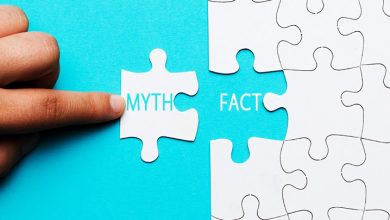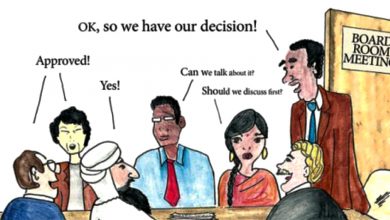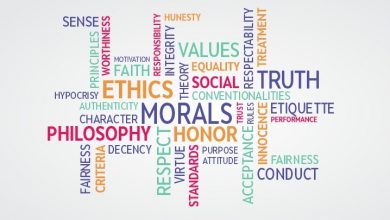Choose your battles
What can we do to make the work we do more sustainable, and to prevent burnout and emotional overwhelm from being continually bombarded by the needs of the world around us? Most new businesses start out with a business plan, concrete goals and the methods that would work to achieve them. Can we apply the same principles to our non-profit ideals? This article aims to answer these questions and provide a critical way of looking at our goals and methods of changing the world for the better.

Why did I choose this tool? I used to be one of those people that dove headfirst into every cause that was helping someone or that I was asked to contribute to. I worked very hard with no pay for over 8 years, giving all of my time, energy, emotions and brainpower towards accomplishing the goals of a non-profit organization. While I don’t regret it, if I had the chance to do it again I would do it in a smarter way and I wouldn’t neglect my own needs for it. I am still driven to do my part to make this world a better place, but I am no longer a martyr for this cause. I believe that my current perspective is much healthier and leads to much better results for the said cause, not to mention my own well-being.
How does this apply to being a trainer? As trainers working with or for non-profit organizations, it’s easy to get so caught up in the cause (or causes) that we are fighting for, that we are neglecting our own emotional, mental and physical well-being. In addition to this, there are times when the causes we are fighting for are not even our own, but we have been drawn into them by others who may not always have our best interests in mind. While this may bring temporary results and satisfaction, continuing in this way isn’t usually sustainable, whereas if we have the capacity to look at our goals and strategies critically we have a much better chance at success (and staying alive and happy in the meantime!)
Main content:
Thinking critically about social justice work
There are some days when I wake up and spend my entire day thinking about the injustices happening in the world, sometimes even dreaming about it.
The list truly seems to be endless. There are people that don’t have enough food, there are refugees with no home and seemingly no future, there are women, men and children who get physically, emotionally and/or verbally abused. There are people with physical disabilities suffering from the limitations that they bring, and there are people with mental disabilities or illnesses who are trying hard to have a life and stay sane. There are those who have suffered abuse from cults or religions, and those who have had their childhood stolen from them. There are those who have been unjustly imprisoned, and then those who have suffered from the results of a war and even torture.
On the higher end of the spectrum, there are people who are hired and/or fired without a good reason, and there are highly qualified people who are never given a chance. There are those with great education that are not considered worthy enough because of where they come from, and then there are those that were never given a chance to be educated in the first place. There are people who are being discriminated, because of their nationality, their religion, the color of their skin, their gender, lifestyle choices or countless other factors.
For these and many other reasons, there are so many people who are struggling just to get by, to survive, to provide for their families, to feel a sense of belonging and purpose, to get or retain physical and emotional health. And there are those of us who feel that it is our calling, duty and responsibility to do something about it. There are empaths, who feel the pain of others as if it were their own. There are those who have suffered from the above-mentioned hardships and learned how to survive or even thrive, and want to do something for those who are still suffering. And there are those who just want to make the world a better place.
If you fall into one of these categories, this article is for you. From one fighter for justice and wellbeing to another, perhaps from one empath to another, or from one former victim and current hero to another.
The problems of the world can overwhelm us, sadden us, disappoint us. They can make us want to fight harder, and do more then we are even physically and emotionally capable of. They can lead to some kind of burnout that is difficult to recover from, a burnout from overspending emotional energy on lost causes.
There is no way that we can fix it all, there is no way we can stop all the suffering. And by bringing pain, suffering and burnout on ourselves we are not going to solve anything for anyone. So what exactly am I advocating here, is it to be apathetic and do nothing?
Far from it. In fact, what I am proposing is a way that will get you further with less effort, and where you get to preserve your emotional, mental and physical health at the same time. I am proposing that we think critically about our social justice efforts, just as we would with everything else in our lives. We wouldn’t spend our money indiscriminately, yet we find ourselves spending our emotional energy indiscriminately, and this energy is so much more valuable than money.
Managing our emotions and energy
Many social workers, NGO workers and volunteers for good causes become so involved in their cause that they neglect the most important element of their work, themselves. Their physical, emotional and mental well-being are put in second, third or fourth place. I know many who have given up on having stable relationships, healthy routines, self-care and enjoyment outside of the scope of their work for the sake of the cause that they have embraced. While this may be fine for a time and in order to accomplish certain goals, when it is embraced as a lifestyle it will inevitably lead to burn out and poor results in the work itself. When this is the case, the “cause” has become an addiction, and a step back needs to be taken in order to see the whole picture and adjust to a healthier mode of operation. Think critically about what you’re doing, why, and what the results are for you and for your work. These questions can get you started:
- Is there anything that can be better organized, streamlined or eliminated altogether?
- If this were for profit/business, would I be pleased with the results I’m getting vs. the energy I’m expending? (The results may not be financial, but there should be results in some form that justify the expenditure of time and energy)
- Am I neglecting anything that’s important to my well-being, or the well-being of my loved ones? Am I neglecting relationships or a healthy lifestyle? If so, what changes can be made so that I am still investing in the things that matter?
- Do I need to take a break from the incessant giving, and think about myself for a while and how to get things back in balance?
- Am I driven to help others because I myself am wounded and I need healing? If so, is my work helping this healing process, or is it preventing me from looking inside and working on myself to heal my own wounds? Do I actually need to get professional help to fully heal?
- Is my work really as important as I make it out to be, or is it serving my ego more than any actual need?
- If something happened to me, would there be someone that would carry it forward? If so, why don’t I get more support from them now while I’m still alive and healthy? If not, how can I make it so?
- How many causes am I involved in? Is it just one major one, or am I jumping at every request to volunteer, donate money, do a project, etc.? If so, how can I narrow my vision more so that my efforts are more focused and sustainable?
- Is this cause good in every way? Does it help everyone it affects and hurt no one? Are there subtle narratives in this cause that promote exclusiveness, coltishness, or embrace an “us vs. them” mentality? Does it have the potential to create more of the very problems we are trying to fight?
- Am I connecting my work to my actual passions and interests? Or is it random and based on the need of the moment? If so, how can I connect it more to the things I care about so that my work is more enjoyable and less stressful?
Not succumbing to manipulation, even when it’s for a good cause
“Numerous studies have found that when people are emotionally activated about causes, they tend to be willing to give their time and money to that cause. If you approach people with information on these same causes, without trying to activate their emotions, they don’t tend to be as generous and willing to help. If you think about this empathically, it makes sense—emotions require actions, and giving money or volunteering feels like you’re taking action.
As you observe your involvement in social justice work, look for the emotions being activated. There’s some crossover, but in general, disease-curing activists try to evoke your sadness, fear, anxiety, and pity empathy; environmental activists try to evoke your sadness, fear, anxiety, anger, and indignation empathy; animal rights and human rights activists try to evoke your sadness, anger, indignation empathy, and pity empathy; and so forth.
Many social justice and activist groups pour a lot of time and money into marketing pleas that are engineered to activate specific clusters of emotions about that group’s special focus. This doesn’t have to be a problem. Intentional emotional activation isn’t evil; it’s how activism works, it’s how advertising works, it’s how teaching works, and it’s how parenting works.
If you need people to do something they might not want to do or if you need them to learn something new, you have to figure out ways to compel or maneuver them—and the fastest way is through their emotions and their empathy. There are certainly more and less ethical ways to do this, but in and of itself, trying to evoke emotions in others is not a problem; it’s normal everyday behavior, and we all do it.
Your activism and social justice work can be as emotionally compelling as any form of drama, art, or literature, and it can absolutely increase your emotional and empathic capacities. However, because the dramatic and empathic practice of emotion activation is an intrinsic part of the business model of successful activist organizations, there’s something to watch out for empathically: As we all know, this emotional activation can become absurd and manipulative (“Who will think of the children?”), and it can and does lead to compassion fatigue and empathic burnout. So I ask you, empath to empath, to become hip to this intentional emotional manipulation rather than become a victim of it. Activist groups and social justice organizations feed off of your emotions; it’s how they survive.
The behavioral economist Dan Ariely writes about this very situation in his book The Upside of Irrationality, in which he contrasts the striking differences in people’s responses to two tragic situations. In the first situation, which happened in 1987 in Texas, a toddler who came to be known as Baby Jessica fell into the bottom of a dry well and got stuck for two-and-a-half days. The media went on an absolute bender, with the new cable TV station CNN providing continuous and breathless twenty-four-hour coverage of the rescue efforts.
Baby Jessica was rescued after two days of media frenzy, and though she needed medical attention, she survived and returned to a fairly normal life, media glare notwithstanding. People who had followed the story sent more than $700,000 in donations to Jessica’s family.
Ariely contrasts this situation to the 1994 genocide in Rwanda, Africa, where more than 800,000 people were murdered in ethnic-cleansing violence that didn’t garner even a fraction of the media coverage that Baby Jessica’s two-day ordeal did. Waters was there in 1994, right outside Rwanda, helping to set up refugee camps in neighboring Tanzania, where Rwandans were fleeing for their very lives. But the situation wasn’t so simple and emotionally accessible as a little white baby falling into a well.
There was extreme violence among people of color, decades of simmering tribal inequities with brutality from both sides, squabbling among African countries, political assassinations, and multiple international relief organizations tripping over one another while UN policy makers argued about the precise definition of the word genocide. The media stayed away in droves, and hundreds of thousands of people died because we who might have helped or donated couldn’t access the situation emotionally or empathically.”
McLaren, Karla. The Art of Empathy: A Complete Guide to Life’s Most Essential Skill . Sounds True. Kindle Edition. (edited)
Some questions that we can ask ourselves to know if we are being driven to a cause because of its actual merits or if the feelings that we have are the result of being manipulated are:
- Am I seeing the whole picture of the situation? Do I need more information? Is the information up to date?
- Do I trust the people who are working on this cause? Do I trust the organization?
- Does working with this organization bring better results than I could get if I made the effort on my own?
- Is there another cause that is more urgent then this one, one that could benefit more from my efforts?
- Are the pictures and footage I am seeing accurately representing the reality, or are they just targeting an emotional response without giving the full picture?
Creating sustainable results rather than “feel good” ones
Helping others can make us feel amazing. We are doing something to make the world a better place, and it is something to be proud of and to really enjoy doing it. However, it’s important that we don’t put these “good feelings” above the needs of those who we are actually supposed to be helping.
For example, some reports show that voluntourism can have a negative impact on the community because the efforts are on short term and the poor children or communities in some cases are just being used to fuel voluntourism and don’t experience lasting benefits from the experience, while the volunteer can go home with wonderful stories and feeling good about making a difference in a third world country.
In other cases, the charity efforts can be patronizing and send the message that “we are better then you, here you can benefit from our great generosity”. On this Frank Boyle said: “Even our charity is essentially patronising. Give a man a fish and he can eat for a day. Give him a fishing rod and he can feed himself. Alternatively, don’t poison the fishing waters, abduct his great-grandparents into slavery, then turn up 400 years later on your gap year talking a lot of shite about fish.”
In other cases, the intentions can be good but without taking the time to understand what the community actually needs, what they can do for themselves and what they need support with, things can still go sideways. In this video, the founder of the Enterprise Facilitation organization Sirolli Institute humorously describes how the most noble efforts can be wasted when we go in with the mentality that we know better and we don’t stop and listen to the people we are trying to support.
Shut up and Listen – Ernesto Sirolli:
The why, what, how method
One of the simplest yet most effective methods that I have found for clarifying purpose, direction and strategy is the WWH method (why, what, how). It supports our critical thinking not only about what we are doing, but why and how we are doing it, and in this way we can become aware of aspects that could be better, understand our own motivations and make sure that we are working towards our social justice objectives in the most efficient way possible.
I would recommend not spreading yourself out too thin, especially when it comes to your goals related to social justice or charitable causes. Even one major cause can keep you busy for a lifetime, so don’t try to fight all the battles or you may still suffer from the burnout effects we discussed earlier. For this exercise, just choose your major cause and proceed to outline the what, why and how for it.
Why?
Why am I doing this? What motivated me to do it in the first place? Why are the outcomes important to me? Am I internally motivated, or externally motivated? Am I doing this because I suffered something that I don’t want anyone else to have to suffer through, or is it because I want to make my mark on the world, or is it because it makes me really happy doing it?
What?
What am I doing exactly? Who am I supporting? What is the scope of my work/project/effort? What are the outcomes I am aiming for? What have I achieved so far, and what am I aiming to achieve in the future? What kind of support/partnerships do I have, or need to have, to do this successfully?
How?
The How is often ignored in social justice/charity projects. There is usually a lofty goal, even a strong motivation and reason for it, but the “how” part can be too general and fuzzy to be actionable, and this can make grandiose plans and projects to fall short of their stated objectives. It can also make great ideas to not get the funding they deserve, because the potential funder is convinced of the worthiness of the cause but not by the stated plan of how it will be achieved. Sometimes the most effective “how” can be substantially different from the one currently being used. For instance, someone might start a non-profit organization when actually a concerted effort by a team of people could do the same job more easily and efficiently. At other times, perhaps establishing a business or a social enterprise can be a more sustainable way of reaching the same goal.
Einstein said “The recipe for insanity is doing the same thing and expecting different results.” This is what can happen when we get stuck in the same “how” even though it’s not obtaining the results we want it to, or at least making progress towards them.
Reflection questions: Included throughout the article
Exercise
Take some time to put your social justice ambitions through the “what, why, how” process and strengthen any aspect that is unclear or not strong enough. You need all 3 to be solid in order to be successful, so take as much time as you need to make it as clear as you can before moving forward (or moving further with it). If you can’t clarify or strengthen the “what, why, how” to what it needs to be don’t be afraid to change or adapt your goals until you are certain you are on the right path and investing your energy and emotions in the most effective way.
Closing:
Do you want to really make a difference in the world? Then take the time to think through and write down your “change the world” business plan, and work steadily and smartly towards those goals in a way that is kind and true to yourself and to those you care about.
Rest and self-care are so important. When you take time to replenish your spirit, it allows you to serve others from the overflow. You cannot serve from an empty vessel.
-Eleanor Brown





